A Kozmikus Fizikai Főosztály oldalai
Kozmikus Fizikai Főosztály
Események
Department of Space Physics
People
Research Fellows
Erdős, Géza
Juhász, Antal
Kecskeméty, Károly
Kóta, József
Márkusné Bebesi, Zsófia
Németh, Zoltán
Szegő, Károly
Tátrallyay, Mariella
Kozmikus Fizikai Főosztály
Munkatársak
Tudományos munkatársak
Erdős Géza
Juhász Antal
Kecskeméty Károly
Kóta József
Márkusné Bebesi Zsófia
Németh Zoltán
Szegő Károly
Tátrallyay Mariella
Department of Space Physics
Contact
Department of Space Physics
KFKI Research Institute for Particle and Nuclear Physics
of the Hungarian Academy of Sciences
Budapest, Hungary
Address: Konkoly-Thege út 29-33, H-1121 Budapest, Hungary
Mail address: P.O.Box 49, H-1525 Budapest, Hungary
Phone: +36 (1) 392-2222
Fax: +36 (1) 392-2742
Kozmikus Fizikai Főosztály
Kecskeméty Károly
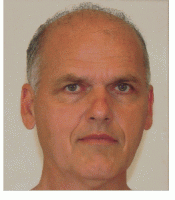
Contact
Professional details
Secretary, Sub-commission of Hungarian Astronautical Society, 1990-1996
- Kecskeméty K. and T.E. Cravens: Accelerated cometary ions observed downstream of the comet Halley bow shock; J. Geophys. Res. 97, 2891-2906 (1992);
- Kecskeméty K. and T.E. Cravens: Pick-up ions at Pluto; Geophys. Res. Lett. 20, 534-546 (1993);
- Ledvina A., T.E. Cravens, A. Salman, and K. Kecskeméty: Ion trajectories in Saturn’s magnetosphere near Titan, Adv. Space. Res. 26 (10) 1691-1695 (2000)
- Valtonen, E., K. Kecskeméty, H. Kunow, P. Király, R. Müller-Mellin, and J. Torsti: Background reduction for quiet time particle fluxes aboard the Solar and Heliospheric Observatory, J. Geophys. Res. 106, 10705-10714 (2001)
- Logachev, Yu.I., K. Kecskeméty, M.A. Zeldovich: Energy spectra of low-flux protons in the inner heliosphere under quiet solar conditions, Solar Phys. 208, 141-166 (2002)
- Ledvina, S.A., T.E. Cravens, K. Kecskeméty: Ion distributions in Saturn's magneto-sphere near Titan, J. Geophys. Res. 110, CiteID A06211 (2005)
- Kecskeméty, K., G. Erdős, M. Tátrallyay, G. Facskó, I. Dandouras, P. Daly, K. Kudela: Distributions of suprathermal ions near Hot Flow Anomalies observed by RAPID aboard Cluster, Adv. Space Res. 38, 1587-1594 (2006)
- Klecker, B., H. Kunow, H.V. Cane, S. Dalla, B. Heber, K. Kecskeméty, K.-L. Klein, J. Kóta, H. Kucharek, D. Lario, M.A. Lee, M.A. Popecki, A. Posner, J. Rodriguez-Pacheco, T. Sanderson, G.M. Simnett, E.C. Roelof: Energetic particle observations, Space Sci. Rev. 123, 217-250 (2006)
- McKenna-Lawlor S.M.P., M. Dryer, C.D. Fry, Z.K. Smith, D.S. Intriligator, M.D. Kartalev, W.R. Courtney, C.S. Deehr, W. Sun, K. Kecskeméty, K. Kudela, J. Balaz, S. Barabash, Y. Futaana, M. Yamauchi and R. Lundin: Predicting interplanetary shock arrivals at Earth, Mars, and Venus: A real-time modeling experiment following the solar flares of 5–14 December 2006, J. Geophys. Res. 113, A06101, doi:10.1029/2007JA012577 (2008)
- Kecskeméty, K., E. I. Daibog, Y. I. Logachev, and J. Kóta (2009), The decay phase of solar energetic particle events, J. Geophys. Res., 114, A06102, doi: 10.1029/2008JA013730 (2009)
2 undergraduate students (1989-90 and 1999-2000)
1 PhD student (2002-2007)
Personal
born in Budapest, 20 May 1951
married, 3 children
English, Russian, French
Department of Space Physics
Tátrallyay, Mariella
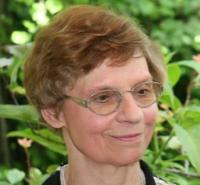
Contact
Professional details
Visiting scientist: 1982-83 and 1987-88: University of California, Los Angeles
1996: Nagy Ernő medal of the Hungarian Astronautical Society
Personal
Born: Budapest, 29 October 1943
English - fluent, German - intermediate, Russian - basic
Kozmikus Fizikai Főosztály
Tátrallyay Mariella

Contact
Professional details
Vendégkutató: 1982-83 és 1987-88: University of California, Los Angeles
Personal
Budapest, 1943. okt. 29
angol felsőfok, német középfok, orosz alapfok
Department of Space Physics
Szegő, Károly
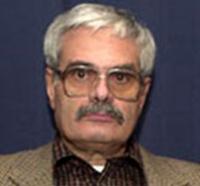
Contact
Professional details
- Hungarian Academy of Sciences, department head, 15.09.2002.- 30.06.2010.
- KFKI Research Institute for Particle and Nuclear Physics of HAS (KFKI-RMKI), and its preceding organisation (since 1966)
Director of KFKI-RMKI, 1975-2002; later science adviser.
- Diplome in Physics, Roland Eotvos University of Sci. (1966)
- Ph.D (theoretical particle physics, 1972)
- D. Sc., (space physics, 1987)
- Member of the Space Science Board,
- Member of the Hungarian Space Research Board,
- 1990-98: member of the COSPAR Bureau
- 1996-2002: member of the Scientific Council of the International Space Science Institute, Bern
- 1998-2007: member of Board of Trustees of the International Academy of Astronautics,
- 2000-2002: Head of the Steering Committee of the Rosetta Lander programme,
- Member of several Steering Committees coordinating space project
- Hungarian representative in the European Strategy Forum on Research Infrastructures, 2005-2007.
- Prize of the Institute (1972),
- Diplome of NASA (1982),
- State Prize (1986),
- “Sign of Appreciation” (Soviet Union, 1986),
- Albert Fonó prize of the Hungarian Astronautical Society (1989),
- „Group Achievements Award” of NASA and ESA, several times,
- Prize of the Hungarian Federation of Technical and Scientific Societies (1991),
- Zoltán Bay prize (2007),
- Pro Scientia Hungarica Medal, Hung. Acad. Sci (2008).
- 1989 -2000 head of the external laboratory of chairs of physics of ELTE TTK, located in KFKI-RMKI,
- lectures in space physics, at ELTE,
- Habilitation (ELTE), 1997
- Professor (private), 1988
Personal
born in 17.08.1943. Budapest (Hungary), married, spouse: dr. Ágota Vajda
Kozmikus Fizikai Főosztály
Szegő Károly

Contact
Professional details
- Magyar Tudományos Akadémia, 2002.09.15- 2010.06.30, főosztályvezető
- MTA KFKI Részecske- és Magfizikai Kutatóintézet (RMKI), ill. jogelődei (1966-tól)
Az RMKI igazgatója annak megalakulásától, 1975-től 2002. 09. 15-ig; azután tudományos tanácsadó.
- ELTE TTK fizikusi diploma (1966)
- fiz. tud. kandidátusa (elméleti részecskefizika) (1972)
- fiz. tud. doktora (űrfizika, 1987)
- Az Űrkutatási Tudományos Tanács tagja,
- A Magyar Űrkutatási Tanács tagja,
- 1990-98 között tagja volt az ICSU űrkutatási bizottsága felső vezetésének (COSPAR Bureau),
- 1996-2002 között tagja volt a berni International Space Science Institute tudományos tanácsadó testületének,
- 1998-2007 között tagja volt az International Academy of Astronautics Board of Trustees testületének,
- 2000-2002 között az ESA Rosetta missziója keretében a leszálló egység építését koordináló Steering Committee elnöke volt,
- Több űrprogramot koordináló testület (Steering Committee) tagja, ill. tagja volt.
- 2005-2007: magyar képviselő a European Strategy Forum on Research Infrastructures testületben
- KFKI Intézeti Díj (1972),
- NASA oklevél (1982),
- Állami Díj (1986),
- Megbecsülés jele érdemrend (Szovjetunió, 1986),
- Magyar Asztronautikai Társaság Fonó Albert-díj (1989),
- NASA és ESA „group achievements awards” több alkalommal,
- MTESZ Díj (1991),
- Bay Zoltán díj (2007),
- MTA Pro Scientia Hungarica Érem (2008).
- 1989 -2000 között vezette az ELTE TTK fizikus tanszék-csoport RMKI-ba kihelyezett laboratóriumát,
- űrfizika tematikájú tárgyakat oktat az ELTÉ-n,
- 1997, Habilitáció, ELTE
- 1998-től egyetemi magántanár
Personal
Bp., 1943.08.17, nős, feleség neve: dr. Vajda Ágota
angol felső, orosz közép
Kozmikus Fizikai Főosztály
Németh Zoltán
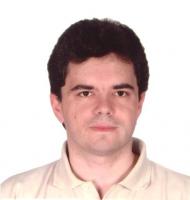
Contact
Professional details
- PhD ösztöndíjas az Eötvös Loránd Tudományegyetemen 1995 – 1998.
- Tudományos segédmunkatárs, tudományos munkatárs, majd tudományos főmunkatárs az MTA KFKI Részecske- és Magfizikai Kutatóintézetben 1998 –
- fizikus, Eötvös Loránd Tudományegyetem, Budapest, 1995.
- PhD, fizika, Eötvös Loránd Tudományegyetem, Budapest, 2000.
- Részvétel a Cassini és Rosetta űrmissziókban
- Elméleti kutatások és numerikus modellezés a helioszférikus mágneses tér szerkezetére, valamint a kozmikus sugárzásnak a bolygóközi térben történő terjedésére vonatkozóan.
- Elméleti kutatások az alacsony dimenziós térelméletek területén.
- Németh, Z.; Facskó, G.; Lucek, E. A.: Correlation functions of small-scale fluctuations of the interplanetary magnetic field, in press Solar Physics 2010.
- Nemeth, Z.; Szego, K.; Erdos, G.; Foldy, L.; Rymer, A.; Thomsen, M. F.; Sittler, E. C.; Coates, A. J.; Wellbrock, A.: Global Features of Ion Distributions Near Titan, American Geophysical Union, Fall Meeting 2009.
- Németh, Z.; Facskó, G.; Erdős, G.; Balogh, A.: Plasma mixing as a cause of solar wind magnetic field variations, Advances in Space Research, Volume 37, Issue 3, p. 467-472, 2006.
- Németh, Z.: Transport across complex magnetic environment, Advances in Space Research, Volume 35, Issue 4, p. 653-659, 2005
- Németh, Z.; Erdős, G.: Perpendicular transport of charged particles in the heliosphere, Advances in Space Research, Volume 27, Issue 3, p. 535-540, 2001.
- Németh, Z.; Erdös, G.; Balogh, A.: Fluctuations of the Heliospheric Magnetic Field and the Anisotropy of Pickup Ions, Geophysical Research Letters, Volume 27, Issue 17, p. 2793-2796, 2000.
- Németh, Z..: Remarks on the solutions of the Maxwell-Chern-Simons theories, Physical Review D (Particles, Fields, Gravitation, and Cosmology), Volume 58, Issue 6, id. 067703, 1998.
- Németh, Z..: Vortex solutions in axial or chiral coupled nonrelativistic spinor-Chern-Simons theory, Physical Review D (Particles, Fields, Gravitation, and Cosmology), Volume 56, Issue 8, pp.5066-5070, 1997.
Györgyi Géza Díj 2002,
ESA award 2004, contribution to the Rosetta mission
ESA award 2005, contribution to the Cluster mission
ELTE MSc fizikus haladó labor, mérésvezető
Personal
1971-ben született, nős, öt gyermek apja.
angol
Department of Space Physics
Király, Péter
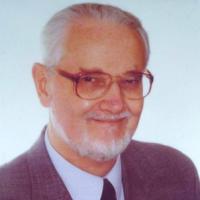
Contact
Professional details
From 1963 onwards I have been working in departments and research groups belonging to the KFKI centre. First in the Department of Mathematics, then in the Group of Theoretical Physics, and finally in the Department of Cosmic Rays/Space Physics of the KFKI Research Institute for Particle and Nuclear Physics.
1958–1963: Student of physics, Eötvös Loránd University, Budapest
Graduated (with distinction) in 1963
- Cosmic Ray (CR) physics: First High-Energy CRs (Air showers and muons), then CR Origin (galactic and intergalactic propagation, anisotropy, gamma rays, extreme energies), later Solar-Heliospheric CR studies (quiet-time solar particles, upstream ions close to the Earth magnetosphere, Voyager results in the distant Heliosphere). Close collaboration with the University of Durham (UK). Participation in the organization of several CR conferences. Between 1990 and 96 member of the IUPAP Cosmic Ray Commission. 1995-96 and 2005-2007 leader of working groups of the International Space Science Institute (ISSI) in Bern.
- Space Physics: Co-PI of the HARP electron spectrometer aboard the Phobos mission, Co-I of several missions, guest investigator of the Ulysses mission.
- Miscellaneous: Theory of data evaluation, historical studies on the experiments of Eötvös and on the Fifth Force hypothesis, and on possible terrestrial effects of extreme solar and astrophysical energy releases.
Hungarian Astronautical Society
Most of my English-language publications are listed in the Astrophysics Data System (ADS) of NASA, URL: http://adsabs.harvard.edu/preprint_service.html
Further papers and conference contributions can be found in various cosmic ray conference proceedings and in Acta Physica Hungarica.
About 15 papers in Hungarian can be reached from home pages of “Fizikai Szemle” and “Természet Világa”.
Jánossy-Award (1980)
Personal
Born: 23 December 1939
Married in 1968 to Éva Török
Children: Tamás Király (1975, Durham, UK)
Csaba Király (1977, Budapest)
English
German
French
Russian
